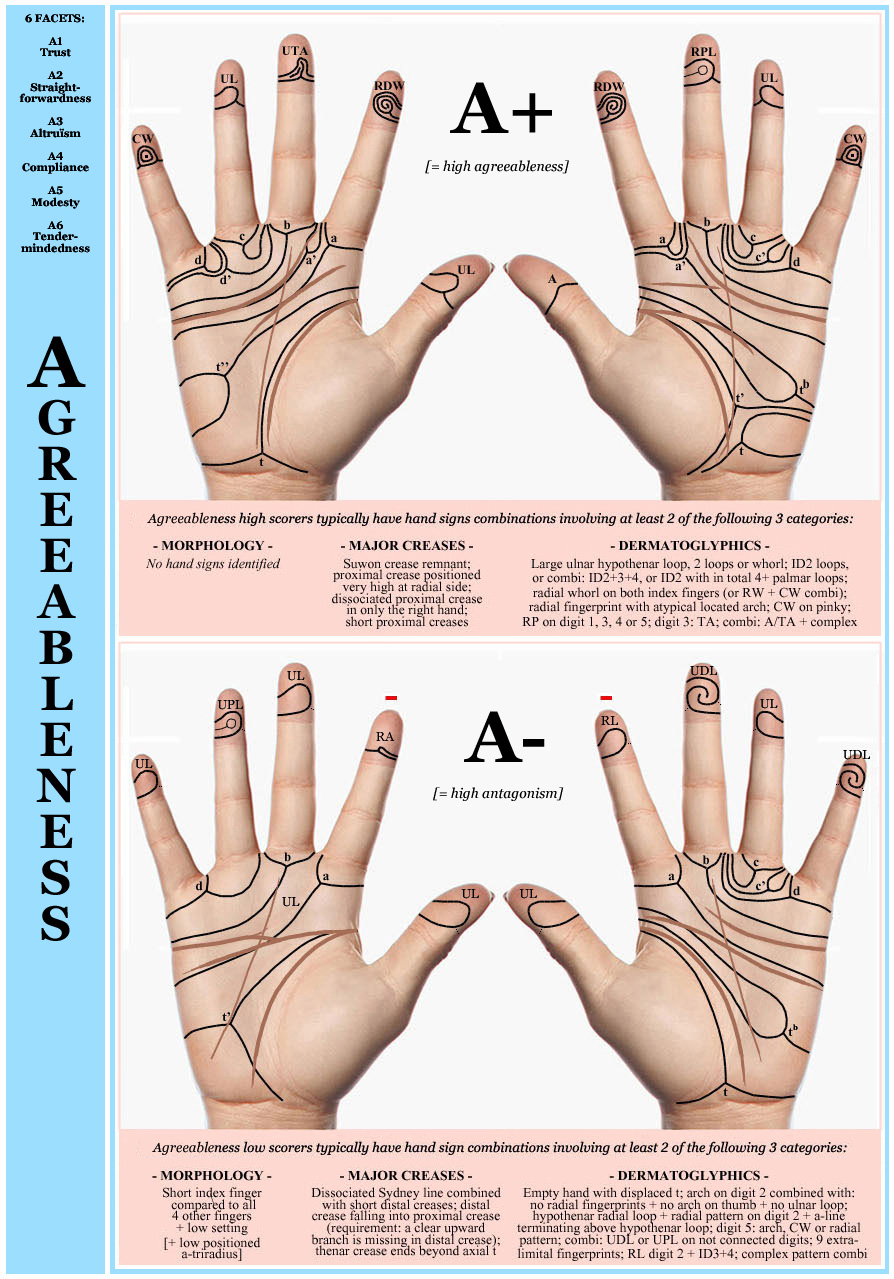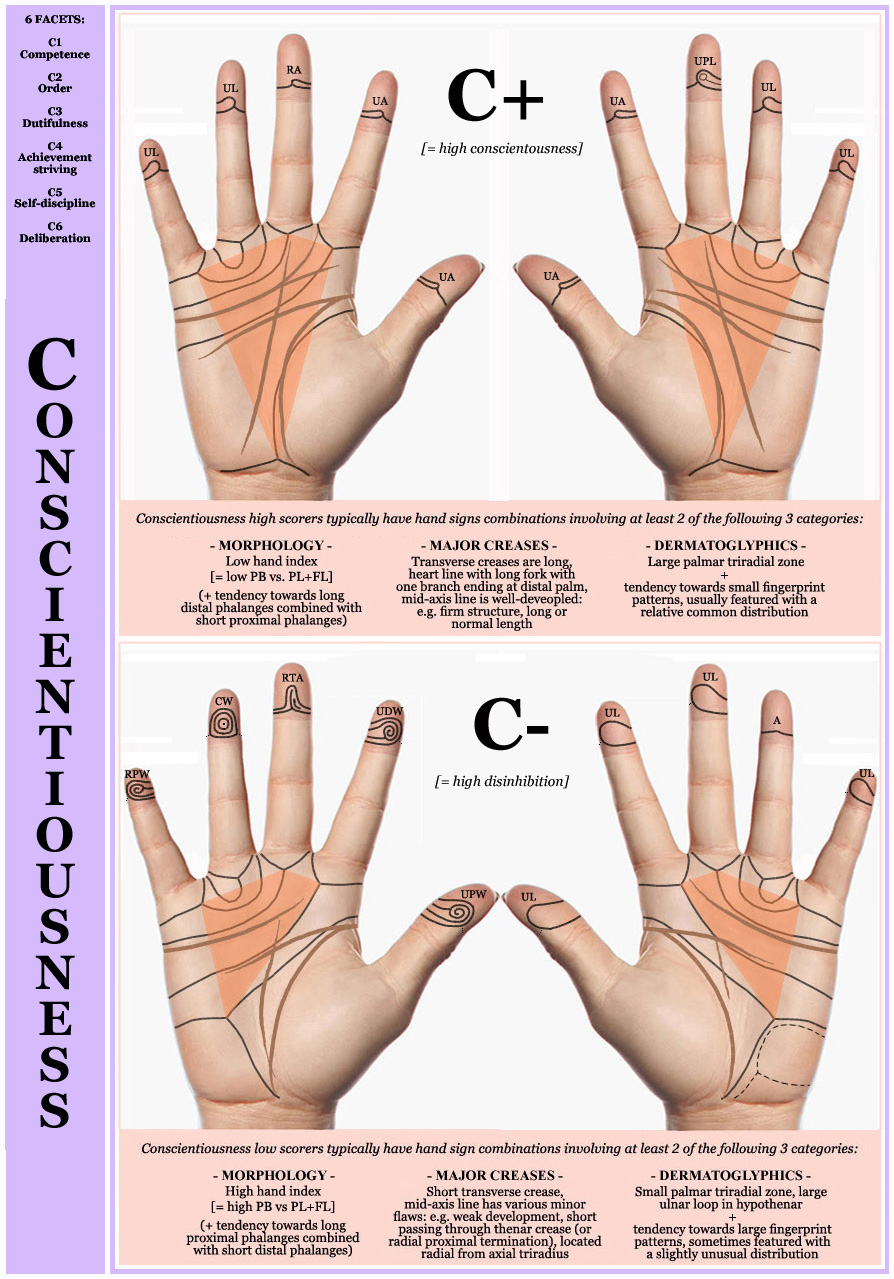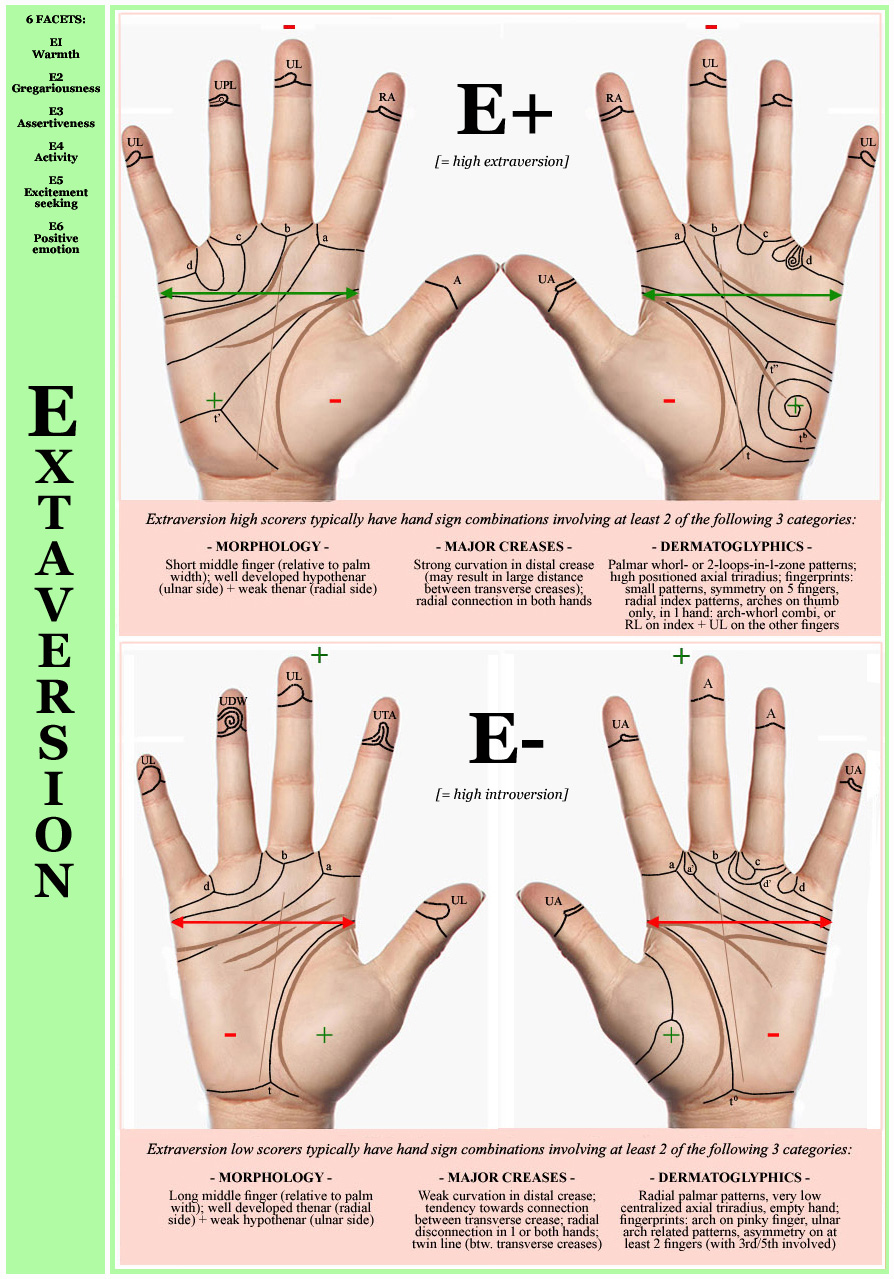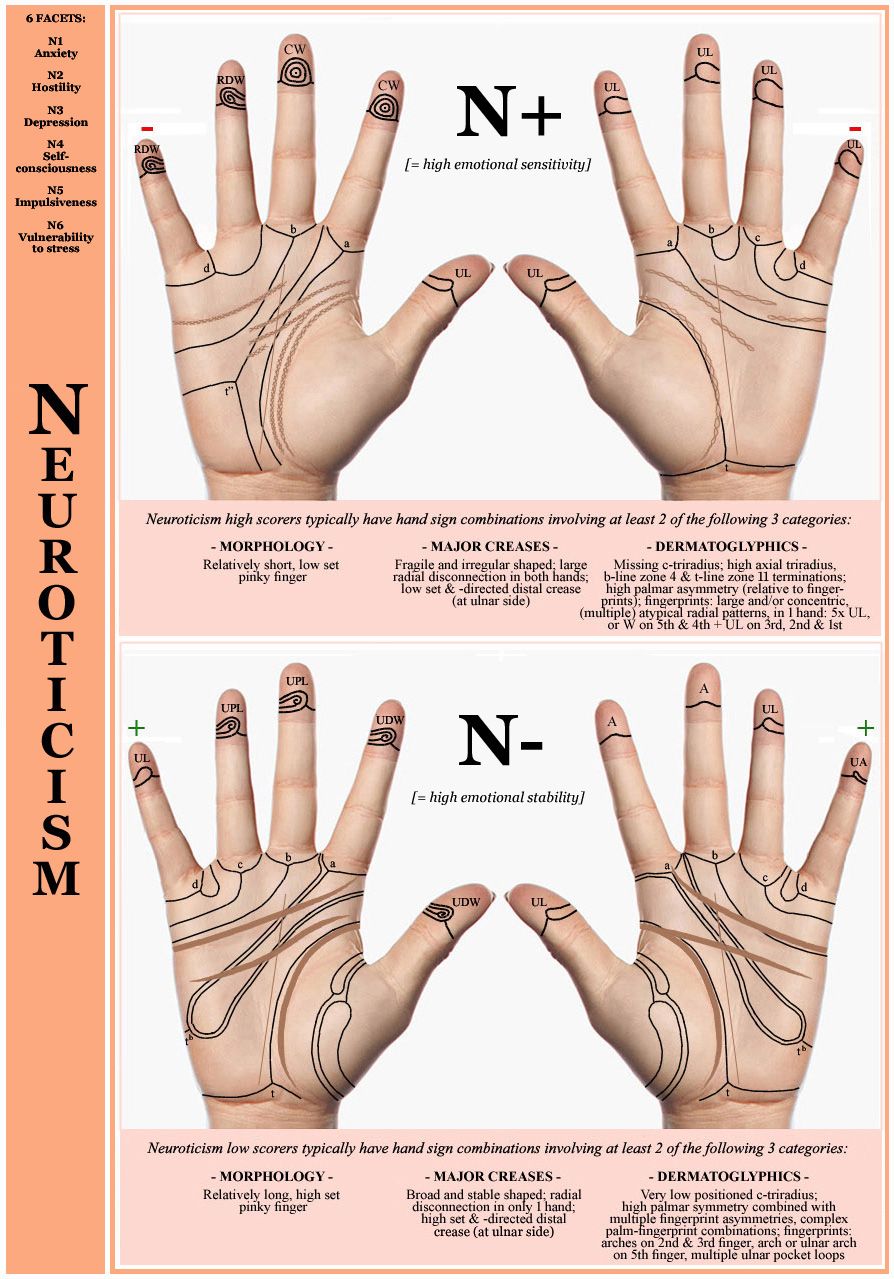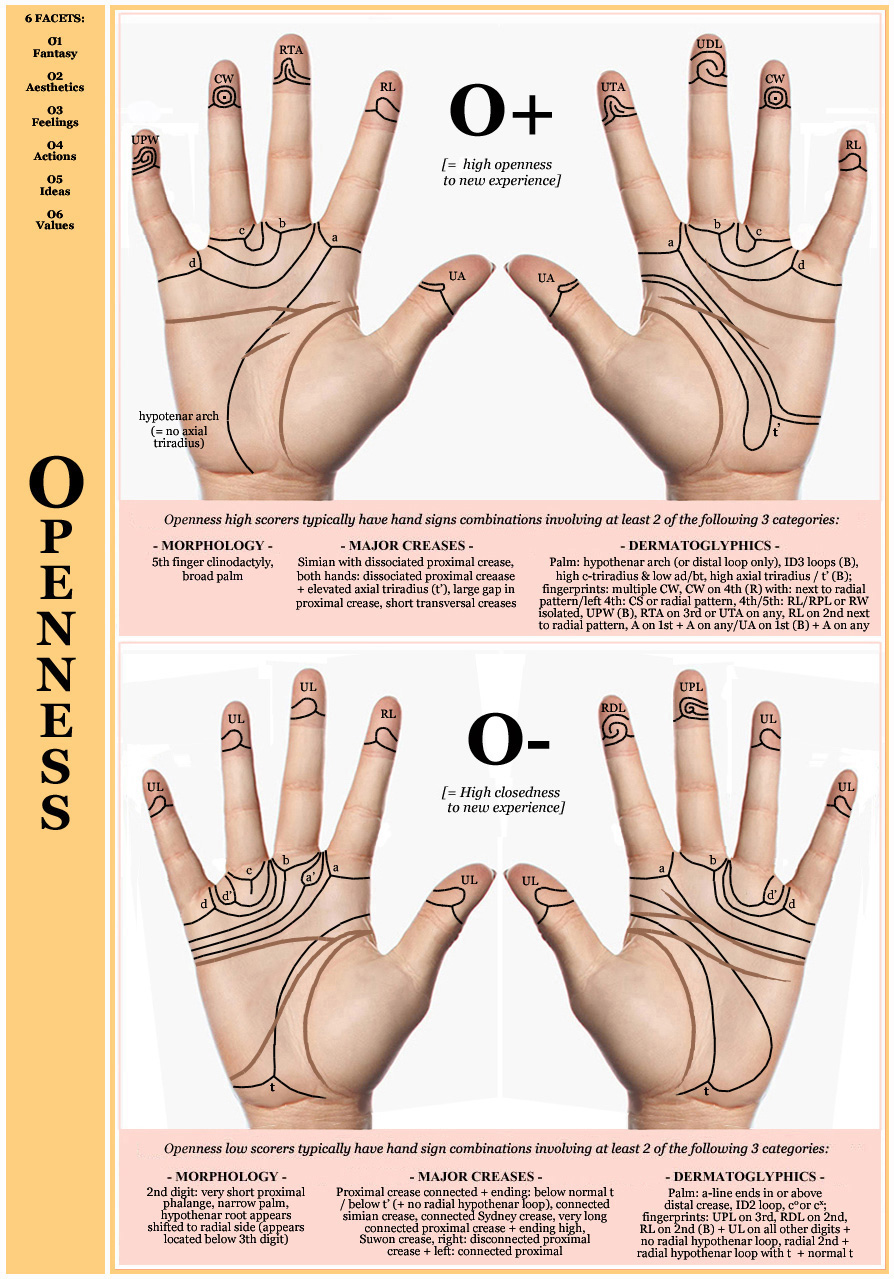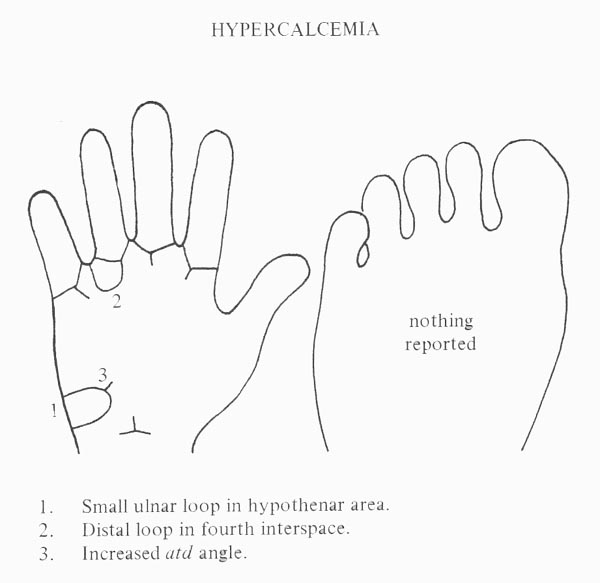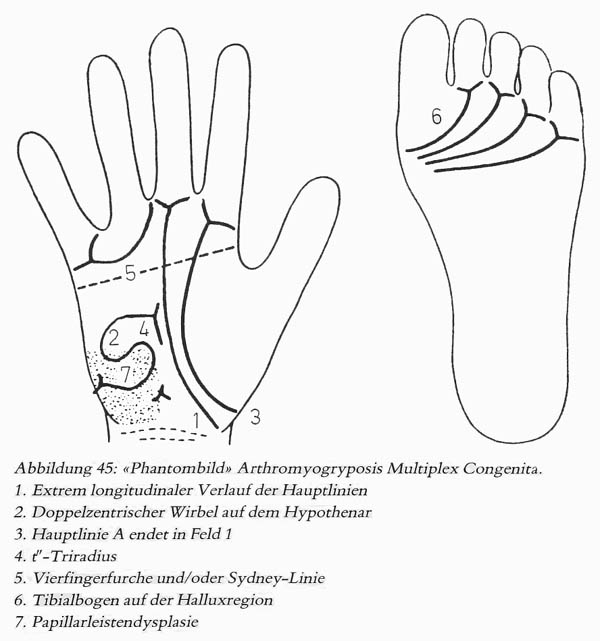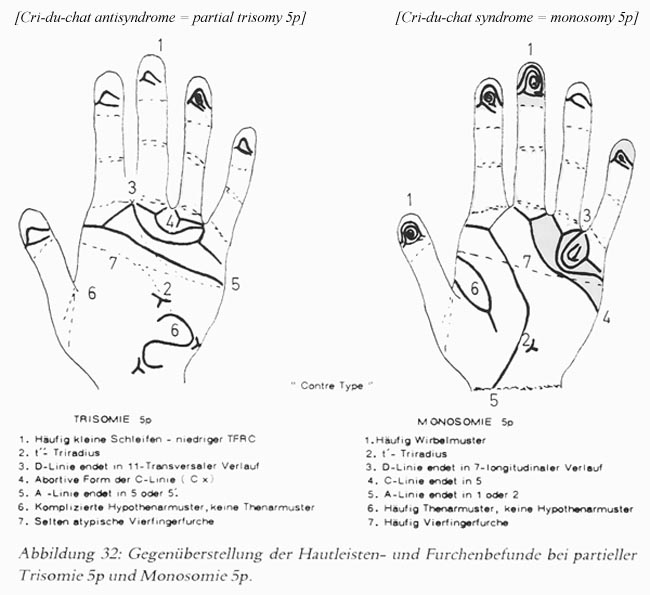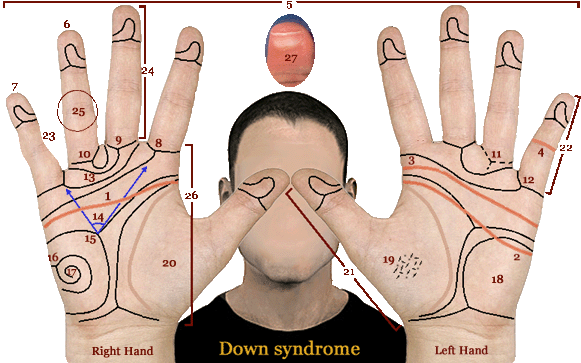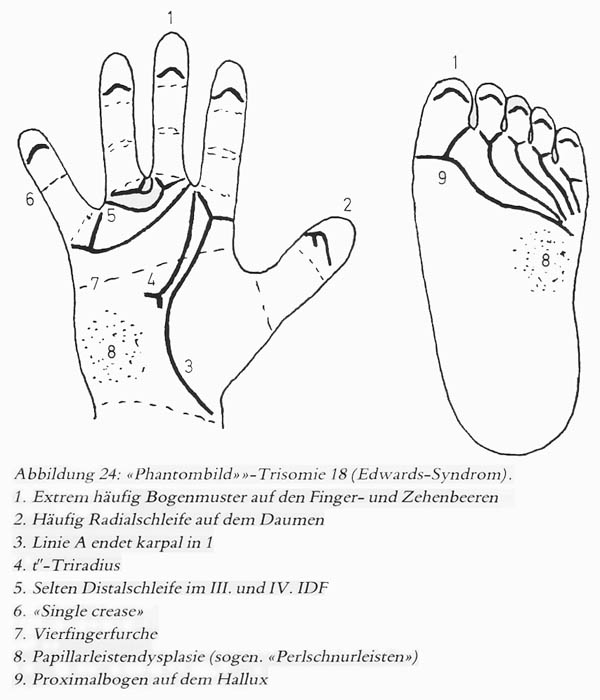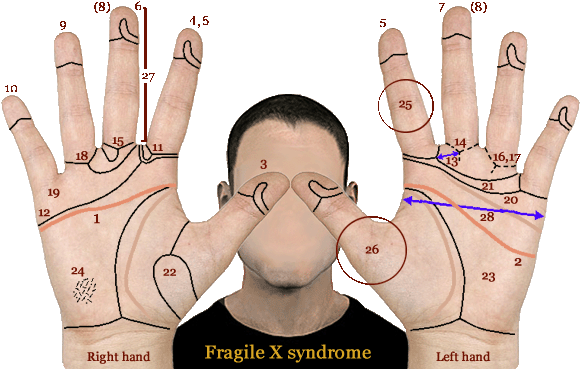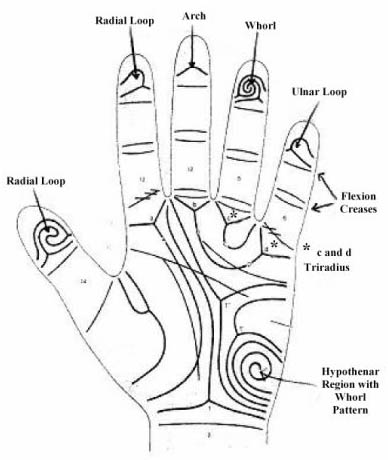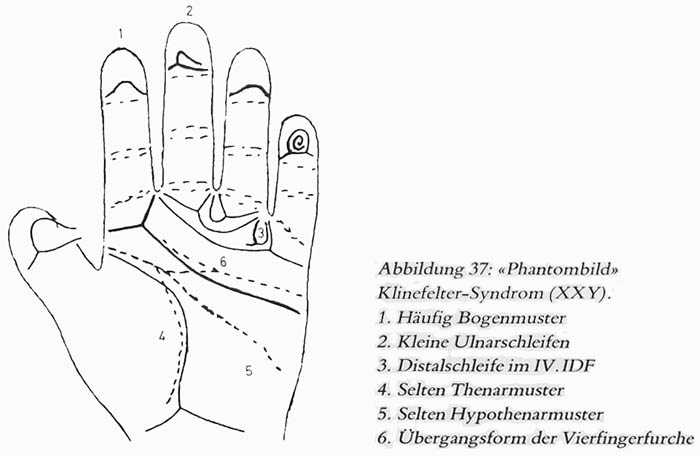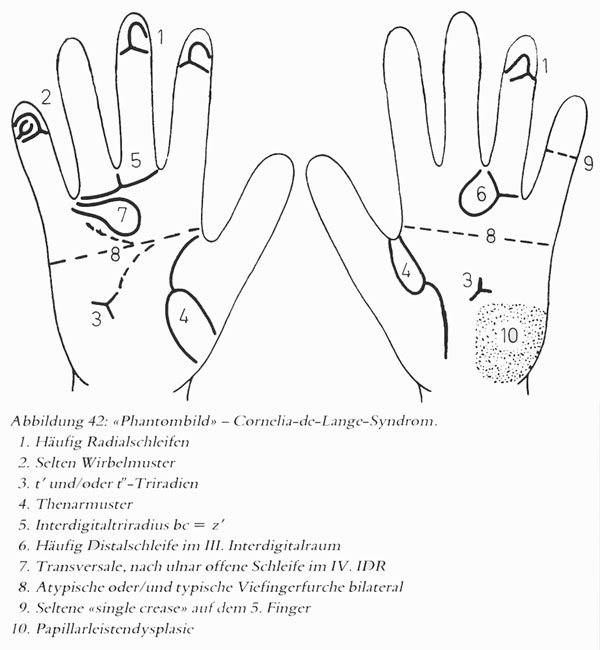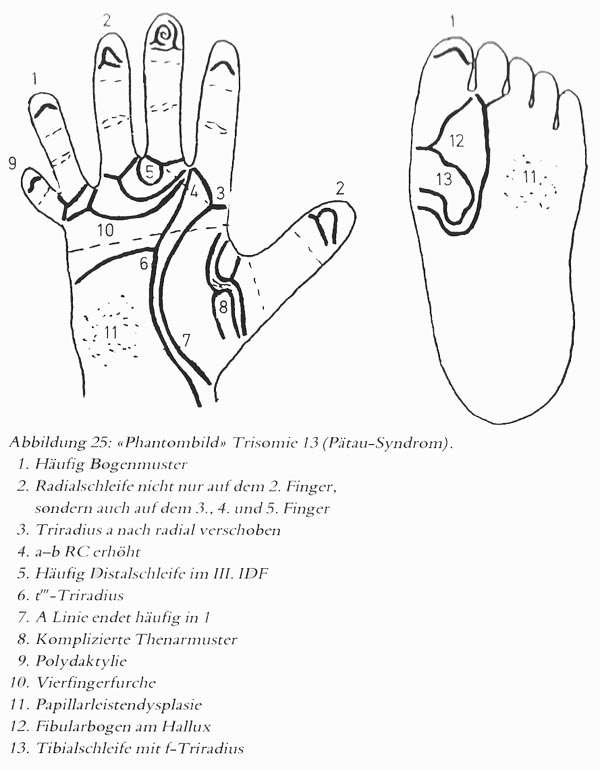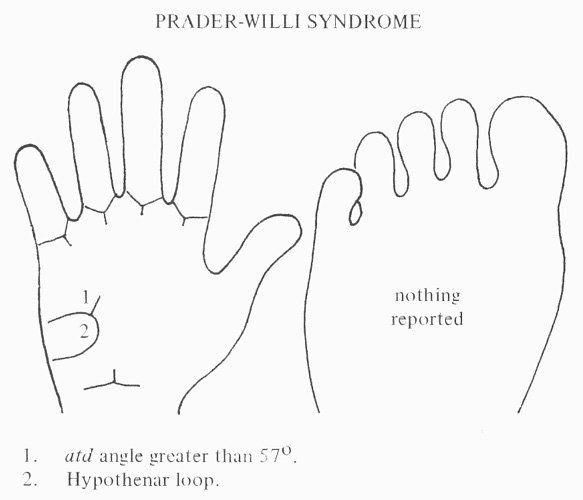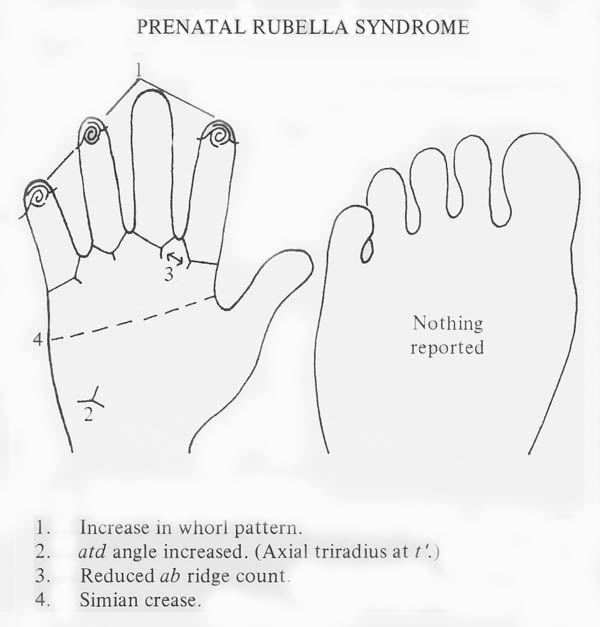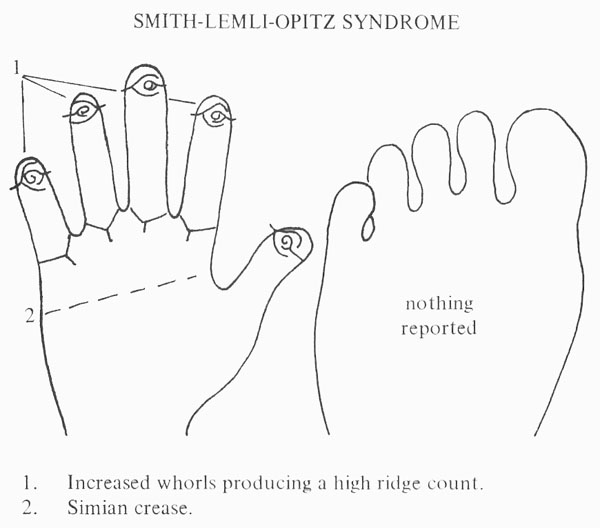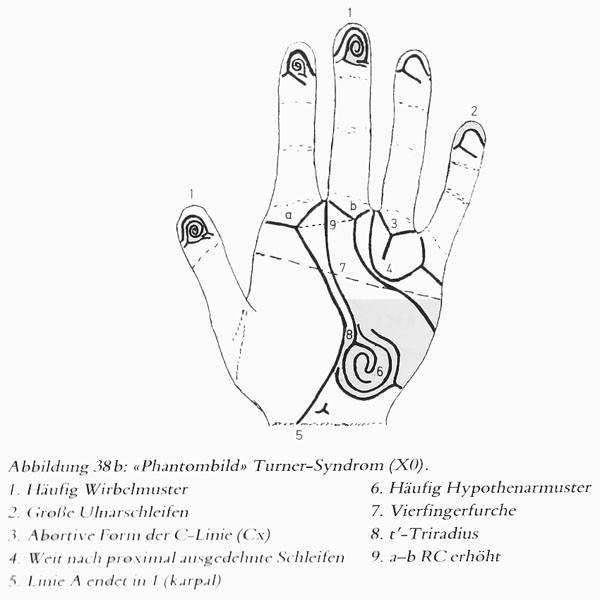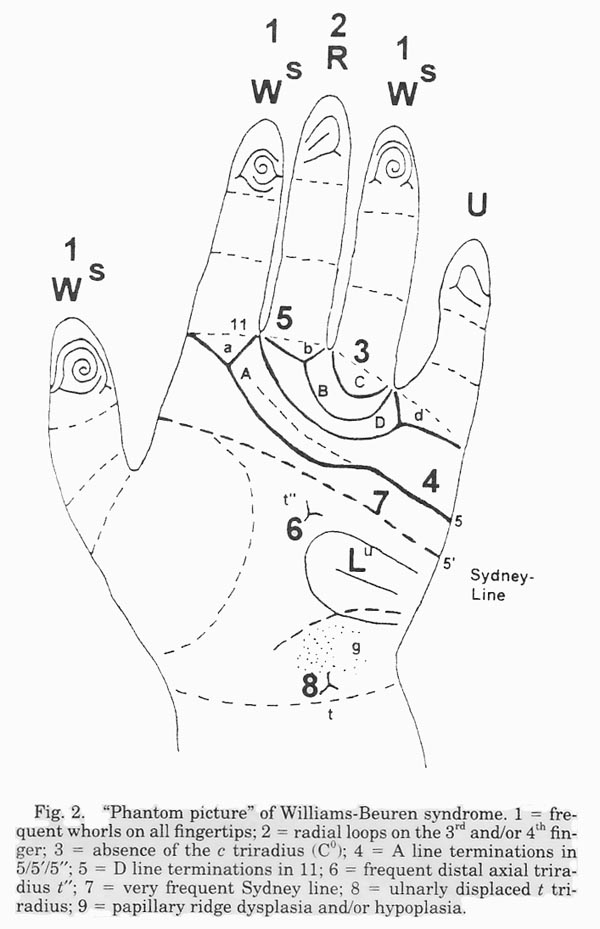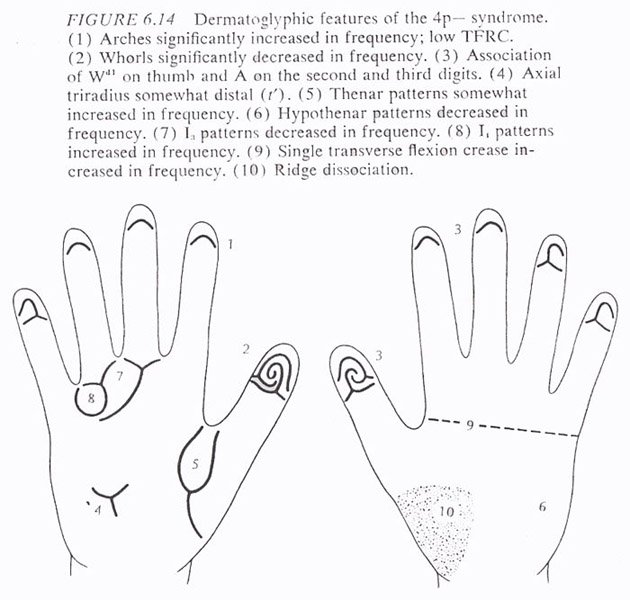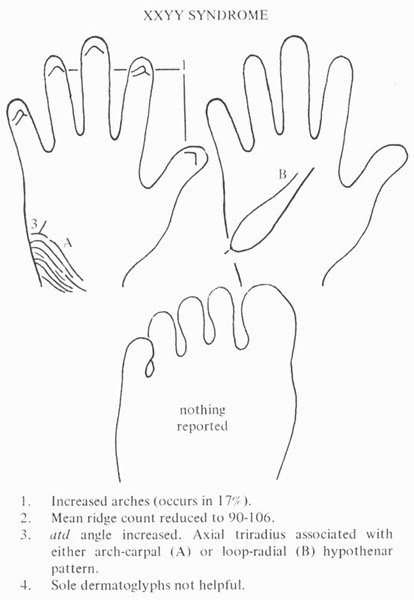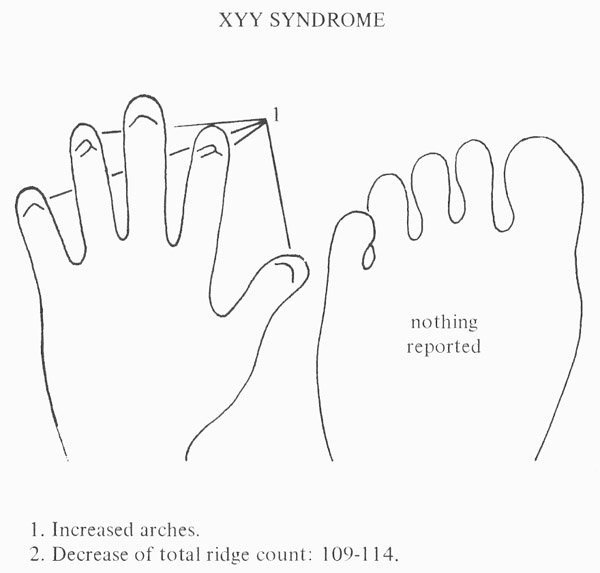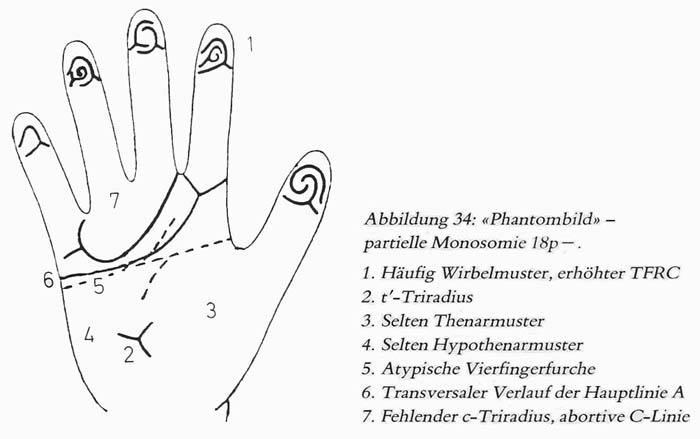
Scientific Hand Charts Collection:
Holt-Oram syndrome!
1 Hand Chart for Holt-Oram Syndrome!
Holt-Oram syndrome - a.k.a. heart-hand syndrome - is an autosomal dominant disorder that affects bones in the arms and hands - typical apparent malformations in the hands become visible via the thumb, manifesting as: a missing thumb [a.k.a. hypoplastic thumb] or a long thumb featured with 3 phalanges creating the looks of a finger instead of a thumb [a.k.a. triphalangeal thumb]. However, all cases of Holt-Oram syndrome have at least one abnormality involving the carpal bones of the wrist (especially on the radial side of the wrist one can expect missing- or extra bones). About 75 percent of individuals with Holt-Oram syndrome have heart problems.
Prevalence: estimated at 1 in 100,000 live births.
One hand chart is available for Holt-Oram syndrome describing the significance of various typical features inside especially the dermatoglyphics, which manifest often combined with a simian line and/or a malformed life line [thenar crease] - see picture below.
NOTICE: Individual hand features described below should not get associated in isolation with any theme; only combinations involving multiple hand levels have potential for diagnostic purposes.
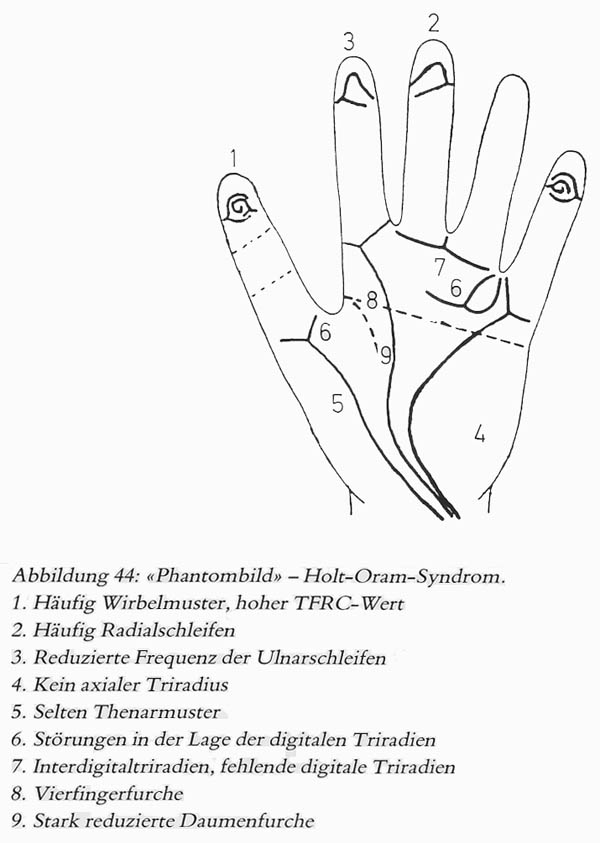
Hautleistenfibel (1981), p.117;
authors: A. Rodewald & H. Zankl
Other significant hand signs (not reported inside the hand charts):
Clinodactyly & brachydactyly belong to the cardinal manifestations of HOS.
Beyond the wrist bones, one of the most characteristic findings in the Holt-Oram syndrome (HOS) involves a thumb anomaly; the condition of the thumbs may vary from absent [thumb aplasia] (35% - see photo 1st below), underdeveloped [thumb hypoplasia], but the anomaly may also manifest as a nonopposable, triphalangeal finger-like digit [first-web syndactyly] (19% - see 2nd photo below). Duplication of the thumb [a.k.a. preaxial polydactyly, split thumb] is also a possibility.
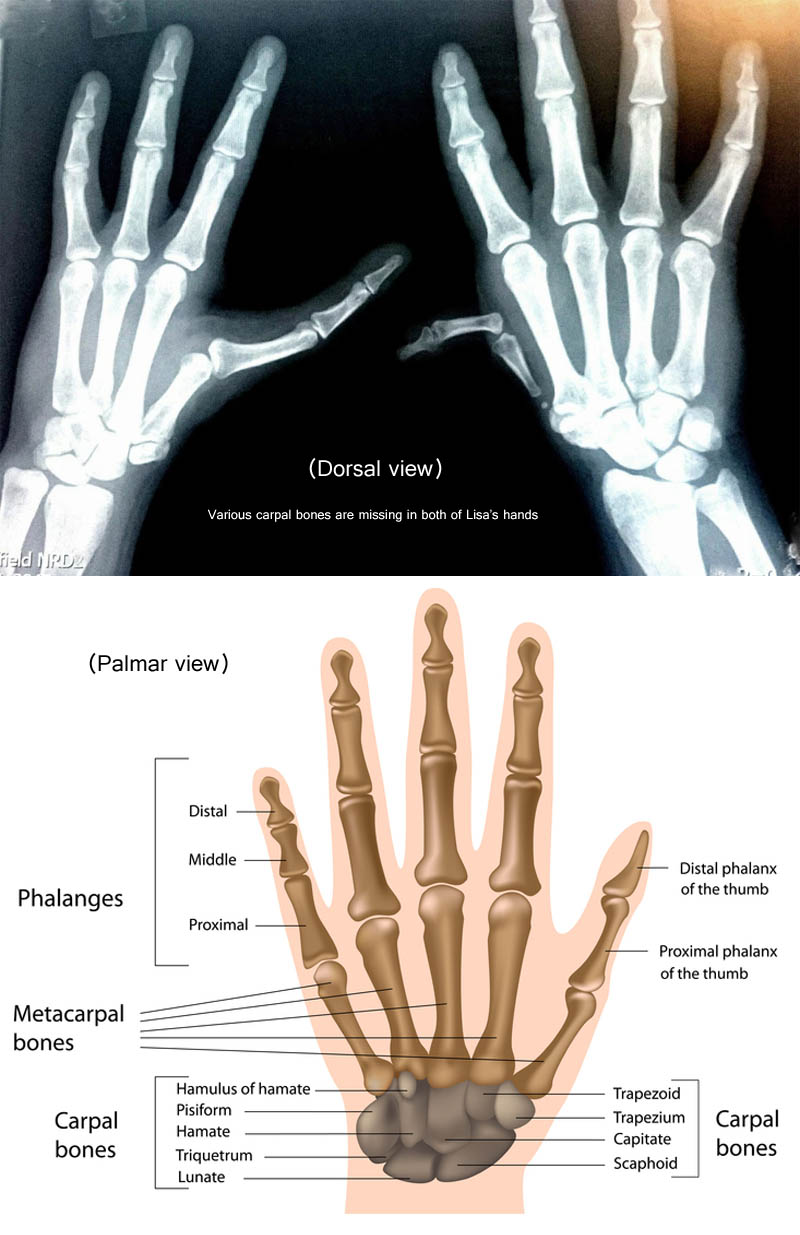
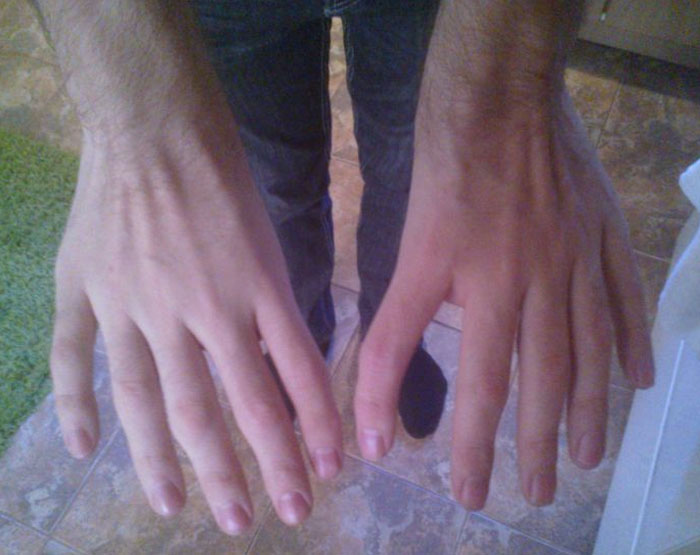
a (nonopposable) finger-like digit.
All significant hand signs listed above for Holt-Oram syndrome together cover four out of the nine perspectives of the hand as defined according Multi-Perspective Hand Reading (including hand level 2, 5, 8 & 9).
A summary of the most significant hand sign combinations in Holt-Oram syndrome is described here:
Decoding the language of the hand:
hand sign combinations in Holt-Oram syndrome!
Hand charts are available for many other diagnostic issues;
start browsing HERE
![]() SCIENTIFIC HAND CHARTS: Introduction
SCIENTIFIC HAND CHARTS: Introduction
Hand charts for Big Five personality dimensions:
• Hand chart(s) for Agreeableness (2x: 1 in 4 people)
• Hand chart(s) for Conscientiousness (2x: 1 in 4 people)
• Hand chart(s) for Extraversion (2x: 1 in 4 people)
• Hand chart(s) Neuroticism (2x: 1 in 4 people)
• Hand chart(s) Openness (2x: 1 in 4 people)
Hand charts for diseases:
• Hand charts for hypercalcemia (1 in 4,000 people)
Hand charts for syndromes:
• Hand charts for arthrogryposis (1 in 10,000 people)
• Hand charts for cri-du-chat syndrome (1 in 30,000 people)
• Hand charts for Down syndrome (1 in 700 live births)
• Hand charts for Edwards syndrome (1 in 6,000 live births)
• Hand charts for fetal alcolhol syndrome (1 in 500 people)
• Hand charts for fragile-X syndrome (1 in 5,000 people)
• Hand charts for Holt-Oram syndrome (1 in 100,000 live b.)
• Hand charts for Kabuki syndrome (1 in 32,000 people)
• Hand charts for Klinefelter syndrome (1 in 1000 males)
• Hand charts for de Lange syndrome (1 in 15,000 live births)
• Hand charts for Marfan syndrome (1 in 5,000 people)
• Hand charts for Patau syndrome (1 in 15,000 live births)
• Hand charts for Prader-Willi syndrome (1 in 15,000 births)
• Hand charts for Rubella syndrome (1 in 100,000 people)
• Hand charts for Rubinstein syndrome (1 in 200,000 births)
• Hand charts for SLOS (1 in 40,000 births)
• Hand charts for Turner syndrome (1 in 2,000 female births)
• Hand charts for Warkany syndrome (1 in 200,000 births)
• Hand charts for Williams syndrome (1 in 14,000 births)
• Hand charts for Wolf-Hirschhorn syndrome (1 in 50,000 b.)
• Hand charts for XXYY syndrome (1 in 30,000 male births)
• Hand charts for XYY syndrome (1 in 1,000 male births)
• Hand charts for 18 deletion syndromes (2 in 40,000 live b.)
NOTICE: Reflexology hand charts are not included in this section because the scientific foundation of any of such charts is actually unknown; nevertheless, you can read more about the fundamentals of such charts HERE.
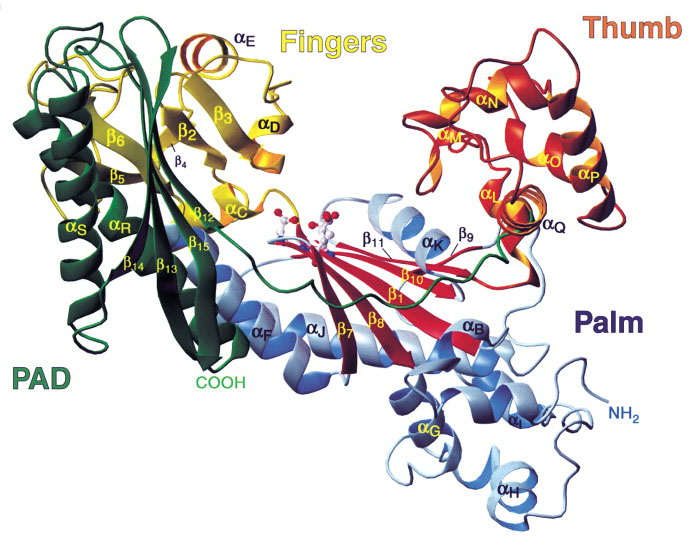
Other charts & maps:
• Fingerprints world map
• Hand reading experts world map
• Hand reflexology charts
